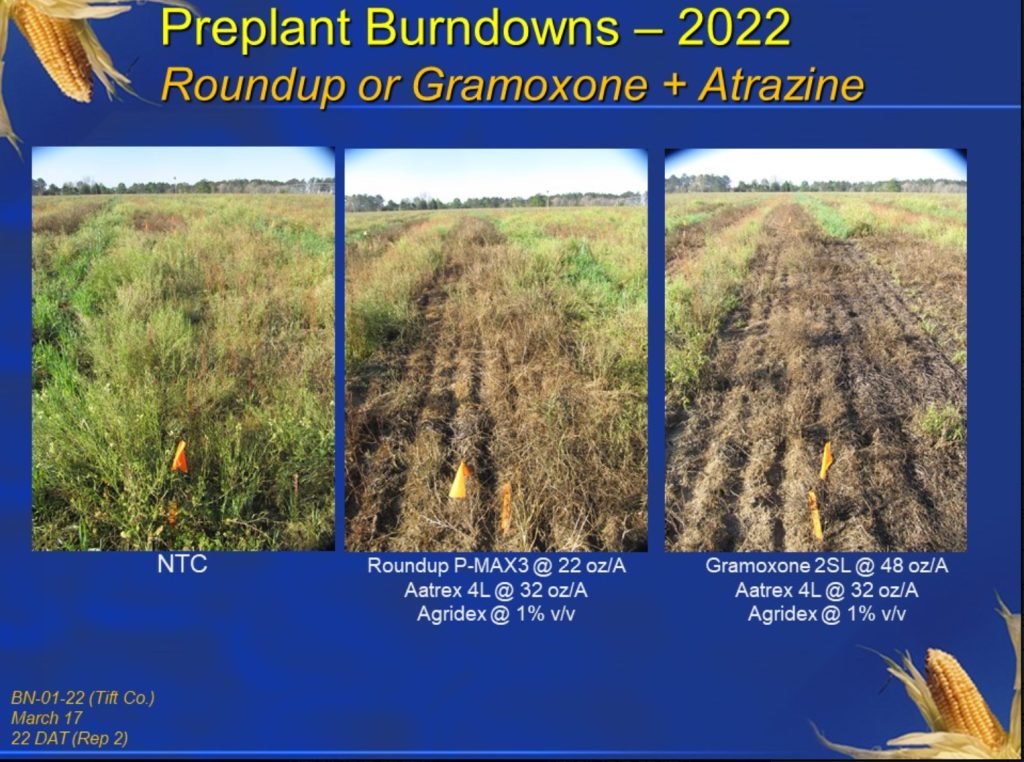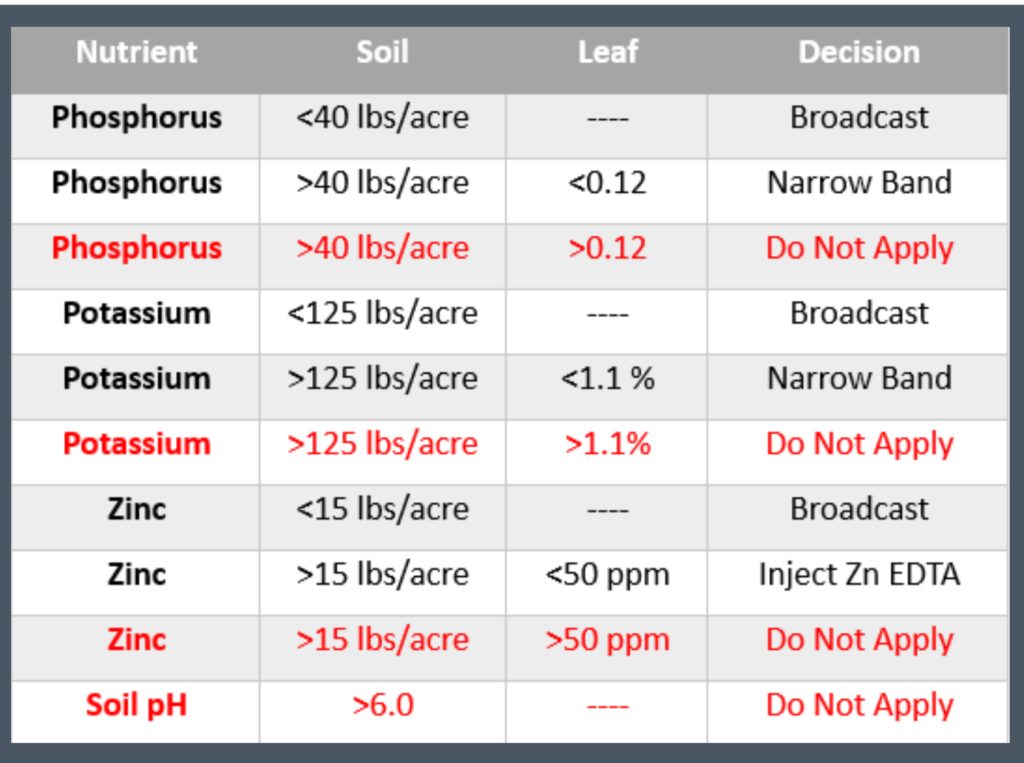It has been another exciting week in Colquitt County agriculture. Questions about corn production, burndown, pecans and forages have been common. They are discussed below.
Some responses to a few common questions this week about preplant burndowns:
1) What is the plant-back restriction for field corn following an application of 2,4-D?
Plant-back restrictions for field corn after a burndown application of 2,4-D are 7 days (16 oz/A) or 10-14 days (>16 oz/A)
2) If a grower cannot wait to plant field corn in 7-14 days after an application of 2,4-D, what other burndown options are available?
Roundup (glyphosate) or Gramoxone** (paraquat) + Atrazine 4L (32 oz/A) is my first choice. There are no field corn plant-back restriction for these treatments.

SIMPLIFYING FERTILIZATION
By: Dr. Lenny Wells, UGA Pecan Specialist
The following table may be helpful in simplifying fertilization decisions in your pecan orchard. This table is based on leaf and soil samples. You may feel that there is no more fat to trim, but there is an opportunity to save money.

Mr. Kichler, when can I fertilizer my bermudagrass hay fields? This has been a challenge this year for sure. Warm season perennial grasses, such as bahiagrass or bermudagrass, green-up when nighttime temperatures remain above 60 degrees F for several days in the spring and soil temperature reaches 65 degrees at the 4-inch depth. For bermudagrass or bahiagrass to utilize any fertilizer, it should be applied after green-up and as active growth begins.
The illustration below shows the 2, 4, and 8 inch soil temperatures for April 1, 2023, from the Sunbelt Ag Expo location of the UGA Weather Network.

The table below shows the 7 day (March 26-April 1, 2023) summary of temperatures, soil temperatures, wind speed and rain fall totals from the Expo location of the Georgia Weather Network.

According to Pam Know, UGA Climatologist, “The preliminary climate summary maps for March 2023 show that the entire region was warmer than normal, although not as far above normal as February. And this was in spite of two separate periods of frost and low temperatures in the middle of the month. Most of the region was also drier than normal, although northern Alabama and northwest Georgia and a strip of land in northern Florida were wetter than normal for the month. Because of the warm and relatively dry conditions, drought expanded through the month, especially in the Florida Peninsula.“


Pre-Plant Burndown Update – Prostko
Below is a blog post from Eric Prostko, UGA Weed Scientist, on several observations from his burndown plots. I have been getting questions about temperature at herbicide application and Reviton from area growers.

I am still getting quite a few inquiries about pre-plant burndowns. Thus, I thought you might be interested in seeing some of the early results of a current pre-plant burndown test located in Tift County. Special thanks to County Extension Agents Justin Hand/Regan Veal and Wes Shannon (grower) for their cooperation! A few comments:
1) All treatments were applied at 7 am on March 9, 2023 (15 GPA with AIXR11002 spray tips). Main weeds evaluated were wild radish (18-24″ tall, flowering) and red sorrel (20-32″ tall, flowering).
2) In the first 14 days after treatment (DAT), low temperatures dropped below 45 F for 7 nights.
3) Observations and pictures obtained on March 30 (21 DAT) are as follows:
a) Gramoxone 3SL (paraquat) @ 32 oz/A + Induce (0.25% v/v) was very effective. No other treatment was more effective in this test.


b) Any treatments with Roundup PowerMax3 (glyphosate) + either atrazine, 2,4-D or dicamba were not as effective as anticipated based upon my prior experiences. I suspect that the cold weather after application influenced the effectiveness of these treatments. Had I known it was going to be so cold, I probably would have bumped up the rate of Roundup slightly and/or used additional adjuvants (i.e. ammonium sulfate and/or crop oil). Maybe these treatments will look better in another week???


c) Roundup + Reviton 2.83SC (tiafenacil) treatments were also very effective. Reviton label rotation restrictions are as follows: field corn = 0 days; soybean = 7 days; cotton = 7 days (1 oz/A) or 14 days (2 oz/A). Reviton peanut rotations restrictions are currently in the process of being reduced to 0 days (1 oz/A) and 7 days (2 oz/A). Estimated cost of Reviton is around $5-6/oz.


d) The surprise treatment of this test was the combination of Roundup + Sharpen (saflufenacil). I have not talked that much about Sharpen in the past because its main claim to fame has been horseweed. Horseweed is usually not the major burndown weed in many south Georgia fields (wild radish and cutleaf evening primrose hold that title). Perhaps I need to re-evaluate my position on this one??? Current label rotations for Sharpen are as follows: field corn/sorghum = 0 days; soybeans = 30 days; cotton = 42 days + 1″ rainfall/irrigation; and peanuts = 120 days.

4) I am not making any “official” recommendations here. These comments are based upon observations from this test yesterday (21 DAT). It takes multiple years of data and observations to formulate “official” control recommendations that eventually get added to the UGA Pest Control Handbook.
Have a great week!!
Jeremy M. Kichler
Colquitt County Extension Coordinator
